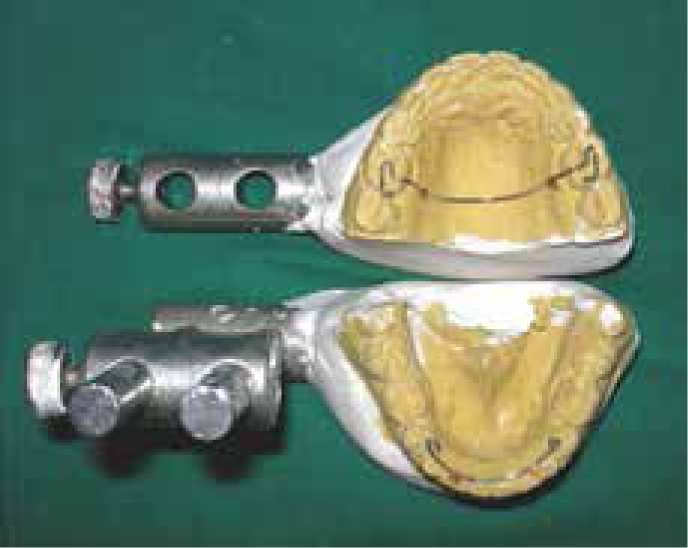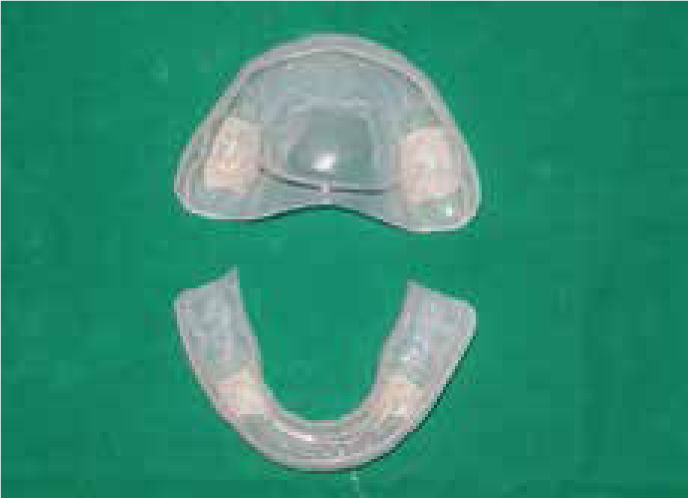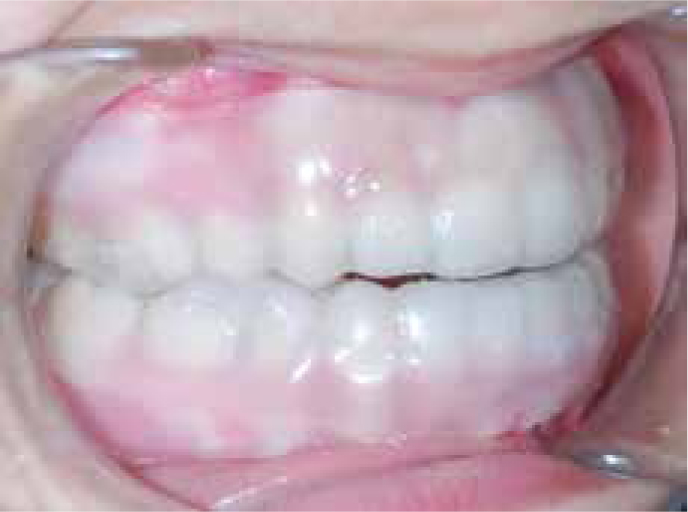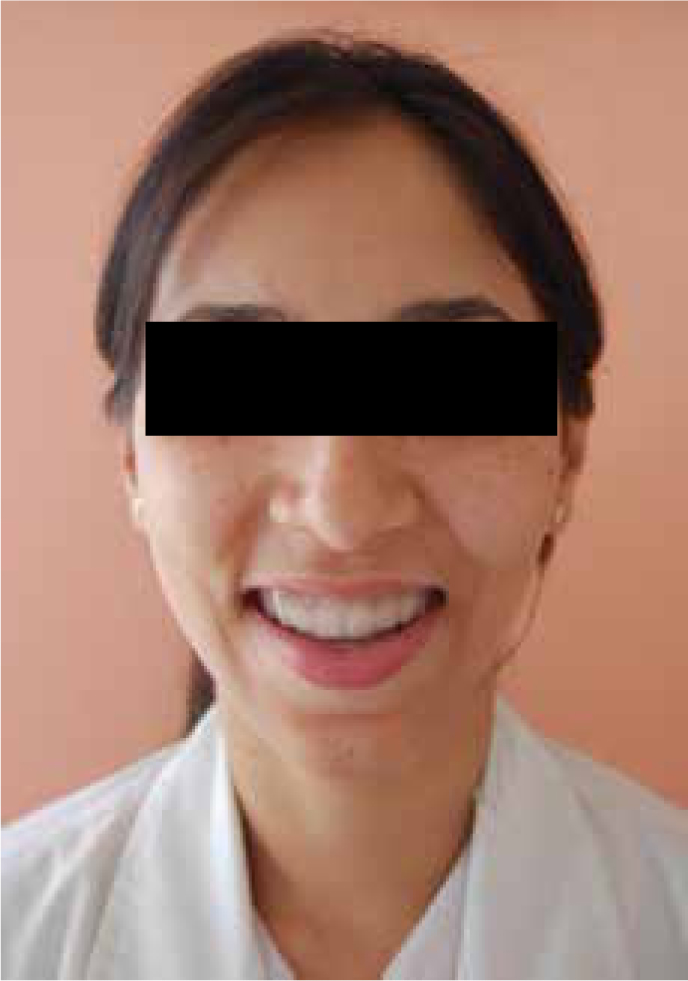Article
Treatment modalities for skeletal Class II malocclusion with mandibular discrepancy include fixed functional appliances, myofunctional appliances followed by fixed orthodontic therapy or orthognathic surgery. Mandibular advancement with any such treatment modality is normally followed by a period of retention. Though good buccal segment occlusion is the cornerstone for stability after correction of an arch-to-arch relationship, a retention appliance is always necessary to allow time for internal bony remodelling to support the corrected occlusion. In order to provide functional support, a retaining appliance such as a Hawley's appliance with inclined reverse plane, a passive Bionator, or an Activator may be used.1 This article illustrates and describes the procedure for fabrication of a modified Bioplast retainer on a Class II treated patient, in which the occlusal blocks similar to a twin block appliance are incorporated into the Bioplast retainer to provide functional support in a Class II treated patient. The aim of this modified retainer technique is to provide functional support and maintain the advantages of a twin block appliance during the retention phase.
Methods of fabrication
Step 1: Bite registration
After placement of a post-treatment fixed lingual retainer, extending up to first premolars in the anterior segment of both arches, impressions of both upper and lower arches are taken, poured with dental stone and models are made. A passive bite registration of the patient with a centric occlusion in a Class I molar and canine relation achieved after Class II treatment, is registered, with interincisal clearance of 1 mm in the anterior region (maintaining the midline coincidence) and 3 mm clearance in the premolar and first molar region (Figure 1). The wax bite is then transferred onto the models and the models are mounted in a fixator (Figure 2). The stopper arm of the fixator is adjusted to maintain the recorded bite registration accurately and the wax bite is removed.


Step 2: Fabrication of wire components and acrylic blocks
Both the upper and lower parts of the fixator are separated, along with the models, to ease the fabrication of the wire components. Transarch stabilizing components are made for both upper and lower arches. In the upper arch, a transpalatal arch is made with 20 mm stainless steel wire bent into a ‘U’ shape, adapted palatally in the intermolar region. The cut ends are bent and tagged over the occlusal surface of the first molar in order to be incorporated into the upper acrylic blocks. Similarly, a lower lingual arch is made with 20 mm stainless steel wire bent into a ‘U’-shaped arch extending from the first premolar of the lower arch running across the lingual surface of the lower anterior teeth. The cut ends are tagged over the occlusal surface of the first premolars and incorporated into the lower acrylic blocks (Figure 3).

As the occlusal blocks are made with self cure acrylic in this technique, a thin layer of separating medium is applied on the acrylizing areas of the models. Initially, lower block acrylization is done by incorporating the lingual archwire to stabilize both the blocks on either side of the arch. Later, the upper block acrylization is undertaken by incorporating the transpalatal archwire into the intermolar region. The position of the inclined plane is determined by the lower block with 70 degree angulation to the lower occlusal surface. The inclined planes of the lower block should be clear of mesial surface contact with the lower molar in order to avoid breakage of the blocks (Figure 4).

The occlusal blocks are trimmed for any excess acrylic. Initially, the trimming of the lower block is undertaken, then the upper block, the occlusal and the sliding aspects of the blocks are trimmed, maintaining the 70 degree angulation of inclined plane. A clearance of 1 mm between the occlusal surface of the opposing teeth and the occlusal surface of blocks accommodates the 1 mm of Bioplast material to be moulded later. Similarly, 1 mm clearance is left along the sliding surfaces of the inclined planes to accommodate the 1 mm Bioplast material. The clearance is checked by repeatedly placing the blocks on the models and articulating the models mounted in the fixator. Finally the blocks are polished.
Step 3: Moulding the Bioplast sheet
The models with the acrylic blocks are demounted from the fixator, and placed separately in a Biostar machine to allow moulding of the Bioplast sheet over these blocks. Before the moulding process, adhesive is applied on the moulding surface of the acrylic blocks, the Bioplast sheet is moulded (1.5 mm thickness, 3–4 atm pressure and 200–220 °C temperature) on the upper model with acrylic blocks using a Biostar moulding machine (Figure 5). The Bioplast sheet is thermoformed under pressure, incorporating the acrylic block along with the stabilizing wire, making it an integral part of the retainer. Similarly, the Bioplast sheet moulding is undertaken on the lower model. The excess sheet is cut away with a band cutting scissor, the Bioplast retainer is removed from the cast, along with the blocks (Figure 6), and the edges are slightly reduced at the mucogingival junction. The retainers are placed in the patient's mouth and checked for any frenal impingement and finally the edges are smoothed (Figure 7). Figure 8 depicts a post Class II treatment extra-oral view of the patient wearing the modified Bioplast retainer appliance comfortably during the retention phase.




Initial full-time wear of the appliance is suggested for 6 months; later the appliance wear can be reduced to night-time only for one year.
